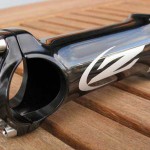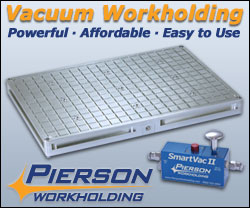I don’t remember when Dual Contact Toolholders first hit the market, but when I saw them I imagined they’d be a flash-in-the-pan product. At this point it seems like they’re more hit than miss and here to stay.
I’m know there are a lot of other engineers that are far smarter than me that have developed these products but there’s just something about dual contact holders that doesn’t sit right with me. I really don’t see how supporting the toolholder’s flange is going to increase rigidity. I also imagine that any chips or grime between the flange and spindle nose will interfere with the tool seating properly in the taper and vice versa. Are regular toolholders really that unstable that I need dual contact? Is the toolholder really the problem and not the 1″ tool that it’s holding? Does anyone else have these thoughts? Is this a case of good marketing over good product? It reminds me of a story that happened to me a long while back.
I once worked with a company developing a new line of handlebar stems for mountain bikes. The stem is the part of the bike that connects the steering tube to the handlebars. We developed a stem that was lightweight yet rigid thanks to the large diameter of the body. When we did rider testing, I found myself frustrated with what they perceived to be true. Since it was lightweight, they immediately imagined it would also be weak and/or flexible. Sure enough, one rider after another said they were experiencing too much “flex”. Bull! We built a test rig and measured that our design was among the stiffest and lightest on the market and definitely stiffer than any of the stems these test riders were currently using! The conversation with one test rider went something like this:
Me – So you really think it’s flexing too much?
Rider – Dude, totally!
Me – So let me get this straight, you’re wearing padded gloves while holding on to foam padded handlebar grips that are attached to 24″ wide hollow handlebars and you think the 3″ long aluminum stem is the part that’s flexing?
Rider – Yup.
Me – Ok let’s go over this… The stem is connected to a 4″ travel suspension fork that uses 0.050″ diameter spokes that connect with a thin aluminum rim that holds a rubber tire that rolls on unstable dirt. Are you sure what you’re feeling is the stem flexing and not one of the other components?
Rider – Dude, I know my bike. The stem has too much flex. I’M POSITIVE!
Me – Ok. Thanks for the feedback.
Rider – Don’t I get a T-shirt or something?
We ran a second round of tests but this time we hyped up the product beforehand by showing charts, graphs and fancy engineering terms. Guess what… the results were phenomenal. We took it a step further. We brought back the original group of test riders and took them through the same presentation. We told them their feedback was instrumental in improving the design. We used the exact same stems from the original test and once again the feedback was 100% positive. I specifically spoke to my original tester (Dude) to see what he had to say – “Dude, you guys really rocked it with this new design. Now do I get a T-shirt?”
This is a long story to get to my point – perception is reality. Are Dual Contact Toolholders really better or are we buying into better marketing? Hopefully I haven’t made any enemies, but I’ve definitely opened a can of worms. Let’s hear your comments below.








My impression is that if a tool starts to load enough to pull away from the taper then the pullstud and its clamp are the only force holding the tool in place. The addition of another contact surface would prevent this force on the pullstud because the tool would be bearing on the spindle face.
This is the only real way I can personally see that the extra rigidity claim of the dual contact would be of advantage. Newer tool designs like capto or HSK with better tool retention systems shouldnt really need the dual contact.
Charles Blair
Lawrenceville GA
Do I get a Tee shirt? How about a free pallet?
Charles: Thanks for the response and insight. Sorry, still no T-shirts!
Jay,glad to see your reports and editorials.
Keep up the Great work
your number one fan